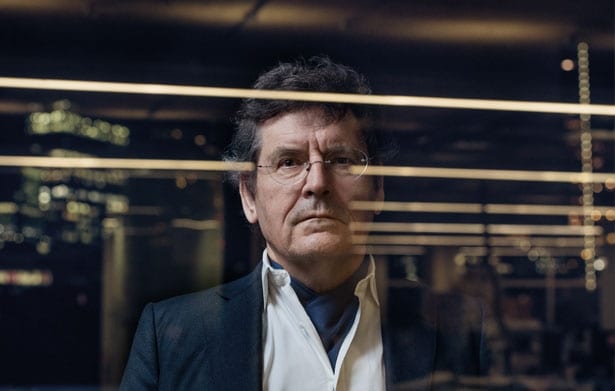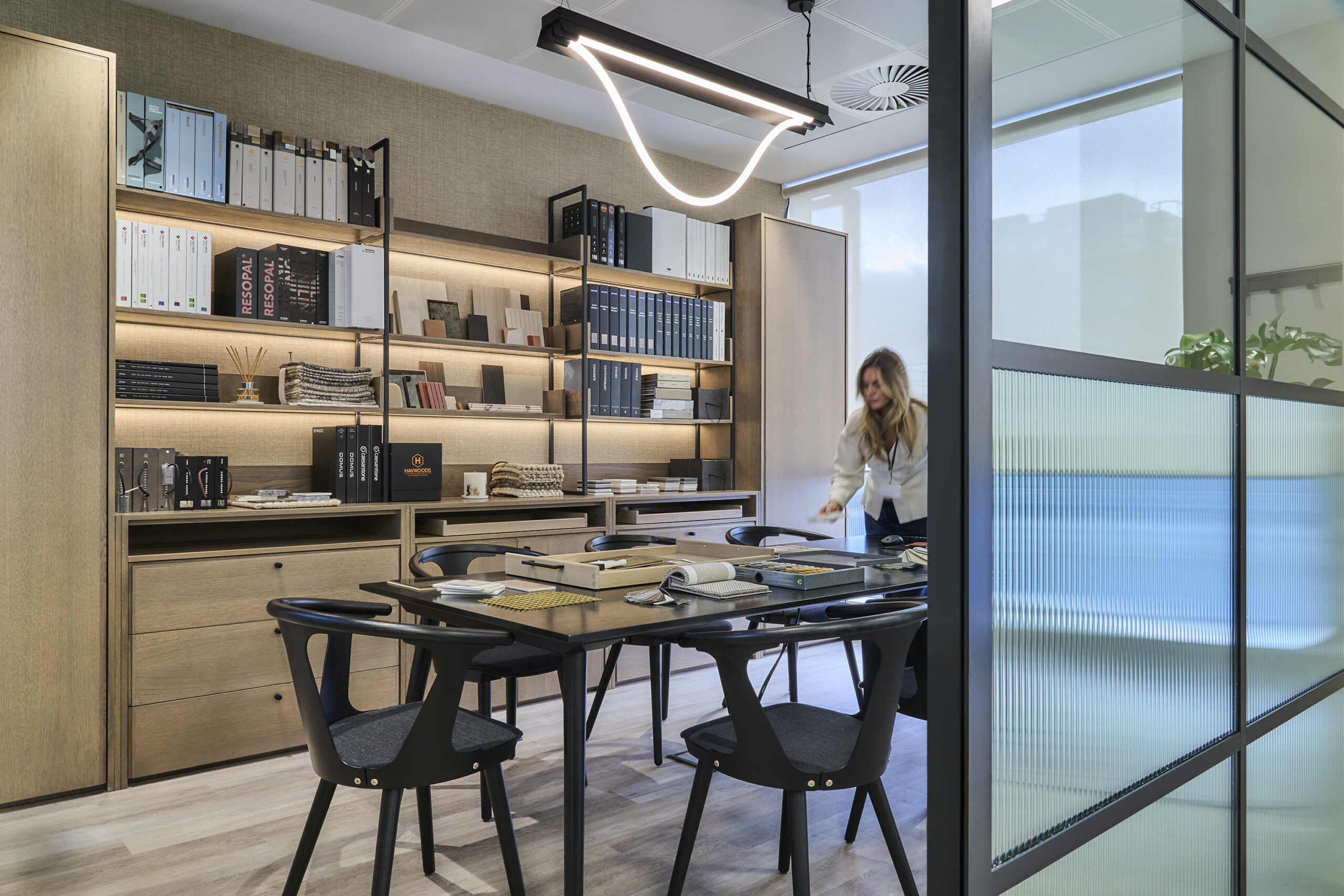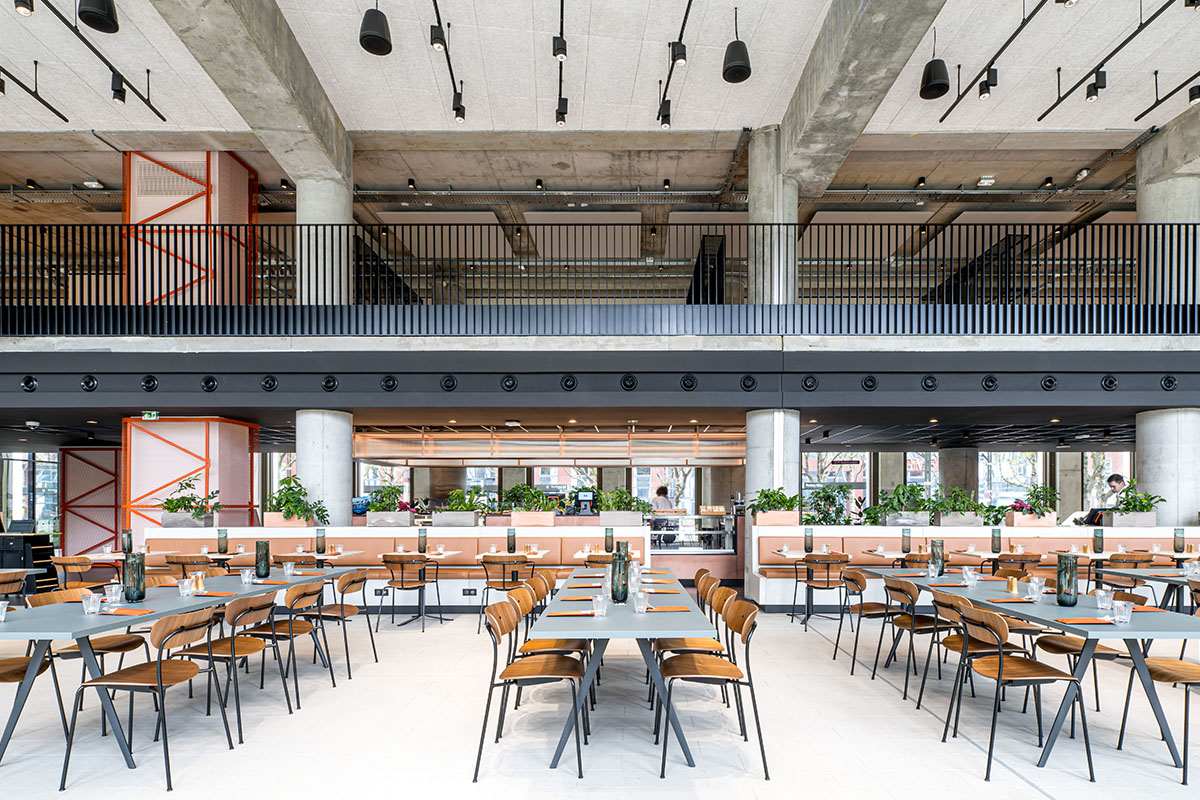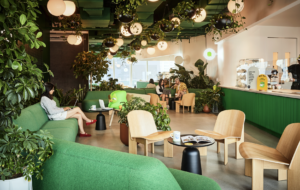 |||
|||
Architect Eric Parry is in remarkably chipper spirits when he returns to his London office fresh off a flight. He has recently been in Boston, where he is teaching at Harvard; Hamburg where he divides his non-work time; and Singapore, where his practice has an office.
Parry was born with an international outlook, having been raised for the first ten years of his life in Kuwait “in the desert”, and indeed the Middle East has found its way back into his life at various junctures. After studying architecture at Newcastle University in the early 1970s, he went on to the Royal Academy and the Architecture Association, with a year studying nomadic settlements in Iran.
 Richard Deacon’s sculptural cornice stands out visually
Richard Deacon’s sculptural cornice stands out visually
Some 40-odd years on, his work ranges from condominiums in the Middle East to large-scale office projects in London, which is where OnOffice’s interest lies. That, and his love of the possibility of surfaces made him a shoo-in for this, our materials issue. He talks passionately about the possibilities of Corten steel, terracotta and ceramic.
Innovative use of materials
The latter forms the hero element of One Eagle Place in the West End, one of the first major projects for the Crown Estate in its St James’s portfolio in 2013, which involved a mixture of conservation of existing elements and innovation in incorporating new facades. The ceramic facade features polychromatic glazes that delight the eye in terms of colour and the interplay with light.
 The iridescent white ceramic frontage of 10 Fenchurch Avenue
The iridescent white ceramic frontage of 10 Fenchurch Avenue
“Casting clay has some fantastic qualities,” Parry enthuses. “The product becomes eminently sculptural. We created the profiles then it was a question of glazes – and wow what a wonderful sense of artifice. It’s no longer taking a known material like stone or brick.” Sculptor Richard Deacon created an artistic flourish, creating a cornice that almost appears to have grown out of the building.
Strong legacy
Number 50 New Bond Street is nearby, a project completed in 2012 that features ribs of faience – a fine tin-glazed pottery. Parry again talks with passion about the “depth achieved with glazing, of layering and firing glazes. It’s trial and error by the human hand, which is very different from using polychromatics and colour, which becomes much more artificial.” This redevelopment, where New Bond Street meets St George Street, created two office buildings in what is a highly restricted site where listed buildings abound.
 Vertically hung terracotta cladding on the Welding Institute
Vertically hung terracotta cladding on the Welding Institute
Both these projects have that glorious quality of reaffirming what a great city London is when you just look up. Parry’s love affair with the capital continues with 10 Fenchurch Avenue, a 15-storey, 40,000sq m, office building for Italy’s largest insurance company, Generali, which has retail at the lower levels and a public passageway at street level. The meeting room in which our interview and photoshoot takes place has an abundance of architectural models, among them a scaled-down version of this City of London scheme, which has a beer mug next to it, the complex next to the mundane at first sight. The white of the drinking vessel was a way of keeping in mind the desire for iridescence, Parry explains.
Featuring a staggering 19 kilometres of ceramic in total, Fenchurch Avenue has a brise soleil facade which has an iridescent coating that plays with the light. This project also has a roof garden, designed with German landscape architect Latz + Partner, and Parry was keen that this be accessible to the public: “The greatest privilege is to be able to dedicate the top to London.” This new structure, due to complete in summer 2018, will provide views from the Square Mile of the City’s original incarnation, down to the Tower of London and into the expanse of greater London as we know it today.
Subscribe to OnOffice for the full cover story



















